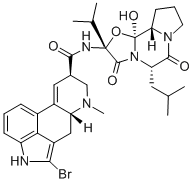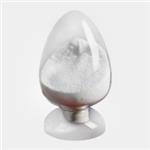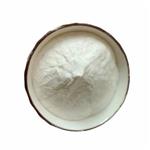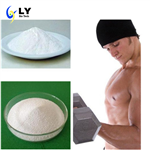
Bromocriptine
- Product NameBromocriptine
- CAS25614-03-3
- CBNumberCB6136426
- MFC32H40BrN5O5
- MW654.59
- EINECS247-128-5
- MDL NumberMFCD00870213
- MOL File25614-03-3.mol
Chemical Properties
| Melting point | 215-218° (dec) |
| alpha | D20 -195° (c = 1 in methylene chloride) |
| Boiling point | 891.3±65.0 °C(Predicted) |
| Density | 1.2734 (rough estimate) |
| refractive index | 1.6400 (estimate) |
| pka | pKa 4.90±0.05(80% MCS t = RT) (Uncertain) |
| Water Solubility | 2.07mg/L(temperature not stated) |
| CAS DataBase Reference | 25614-03-3(CAS DataBase Reference) |
| FDA UNII | 3A64E3G5ZO |
| ATC code | G02CB01,N04BC01 |
| NCI Drug Dictionary | Parlodel |
Safety
| Symbol(GHS) |
 
|
| Signal word | Warning |
| Hazard statements | H361-H362-H302 |
| Precautionary statements | P201-P202-P281-P308+P313-P405-P501-P264-P270-P301+P312-P330-P501-P201-P260-P263-P264-P270-P308+P313 |
| Toxicity | An ergot alkaloid derivative that exhibits potent dopamine agonist properties, particularly at D2 dopamine receptors. Bromocriptine, like dopamine, inhibits prolactin release from the pituitary and so is used in endocrine disorders, such as hyperprolactinemia. It is also used in the treatment of Parkinson’s disease. A large “first-pass” effect is seen with bromocriptine, and peak concentrations occur about 1.5-3 h after ingestion, with a half-life of about 3 h. Nausea, vomiting, and orthostatic hypotension are among the acute adverse effects. Long-term use has been associated with dyskinesias, constipation, psychoses, digital spasm, and erythromelalgia. The LD50 in rabbits exceeds 1 g/kg, p.o., and 12 mg/kg, i.v. |



